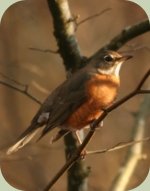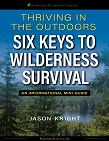Identifying Backyard Birds

By Jason Knight
Identifying backyard birds is a great start towards becoming a proficient birder in any habitat. Its easy to put up a bird feeder and start observing the wild birds that stop by to eat. Time spent learning common species near your home will translate into a good baseline of knowledge to use towards identifying less common birds found deeper in the wilderness.
What to Look for When Identifying Backyard Birds
To begin identify wild birds, a good field guide is a must have. Peterson's or Sibley's bird guides are an excellent choice. Both focus on emphasizing key characteristics for identification of wild birds and show birds in common positions.
There are three main categories of observations that are core to identifying a bird: 1) Size and shape, 2) Field marks, and 3) Behaviors.
Size and Shape
Start with noting a bird's size. Think in terms of comparing the size in relation to birds you know. Is the bird chickadee-sized, robin-sized, or crow-sized? Next look at the shape of the bird. Does it have long legs, a short tail, is it slender? Noting size and shape is the first step to identify wild birds.
Be More Prepared For Your Next Outdoor Adventure!

Don't leave home without knowing these six essential survival skills. Our free survival mini guide reveals the strategies of:
- Shelter & fire to prevent the number one cause of death
- Obtaining clean water to avoid life-threatening dehydration
- Common wild survival foods and other critical skills!

Field Marks
Field marks provide the next layer of helpful information. Does the bird have eye-stripes, a rump patch, or a speckled breast? Is its beak sharp and curved, or narrow and straight? Are there bars on the wings? Field marks provide important clues towards the identification of wild birds.
Behaviors
Behaviors provide the third layer of observations to help identify the bird. Is the bird climbing a tree or soaring high in the sky? Does the bird flick its tail as it moves about? Is it swimming or wading?
All of these observations add up to give you a composite of the bird. These characteristics will then help you use a field guide to research and narrow down to the species you observed in the field.
At first you might find you need to practice what to look for and become familiar with the variety of species in your region. With time, identifying backyard birds will become easier and faster as you grow your knowledge and experience.
By the way, when you're out birding, it's important to know how to stay safe in the outdoors, especially if you were to get lost. Right now you can get a free copy of our mini survival guide here, where you'll discover six key strategies for outdoor emergencies, plus often-overlooked survival tips.
Additional Resources:
Check out this great site about backyard birding and bird feeders: www.the-scoop-on-wild-birds-and-feeders.com
Wildlife Tracking Courses at Alderleaf

About the Author: Jason Knight is a cofounder of Alderleaf Wilderness College and the author of The Essential Skills of Wilderness Survival. He has been teaching wilderness skills for over twenty-five years. Learn more about Jason Knight.
Return from Identifying Backyard Birds back to Birding Articles
Is The Essential Wilderness Survival Skills Course Right for You? Take the "Online Survival Training Readiness" Quiz
See for yourself if this eye-opening course is a good fit for you. It takes just a few minutes! Get your Survival Training Readiness Score Now!

Grow Your Outdoor Skills! Get monthly updates on new wilderness skills, upcoming courses, and special opportunities. Join the free Alderleaf eNews and as a welcome gift you'll get a copy of our Mini Survival Guide.

 The Six Keys to Survival:
The Six Keys to Survival:
Get a free copy of our survival mini-guide and monthly tips!
Learn more